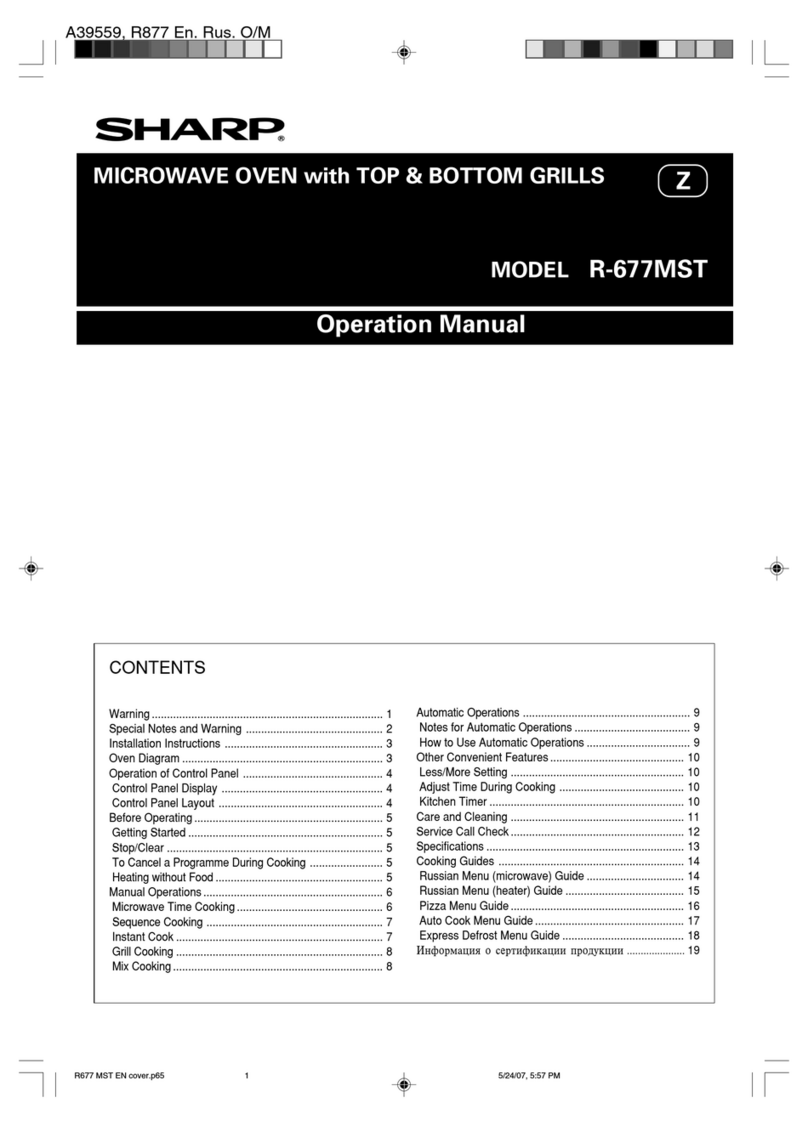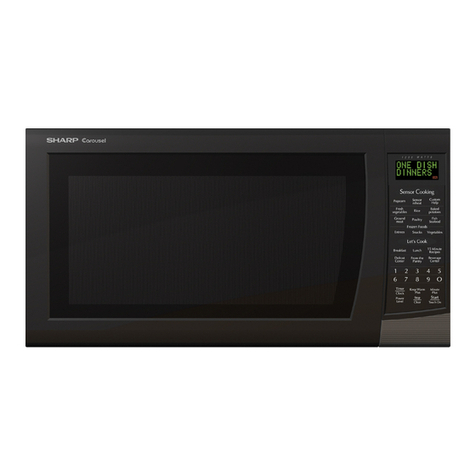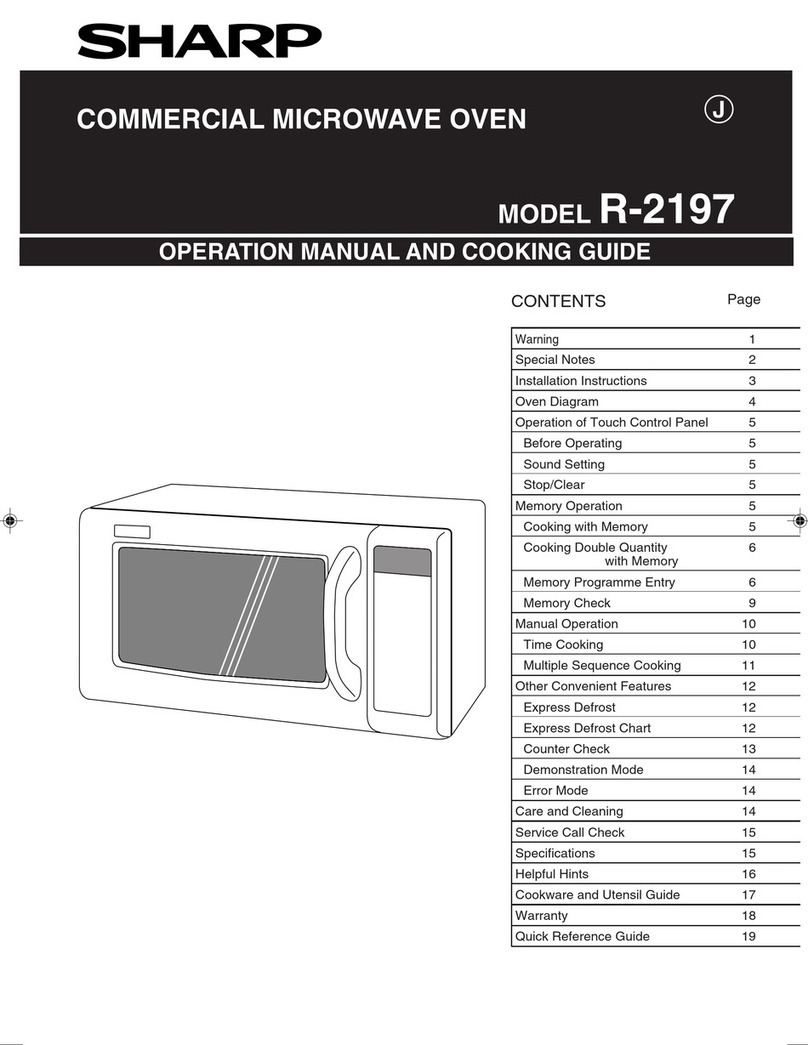Sharp R-297ST Instruction Manual
Other Sharp Microwave Oven manuals
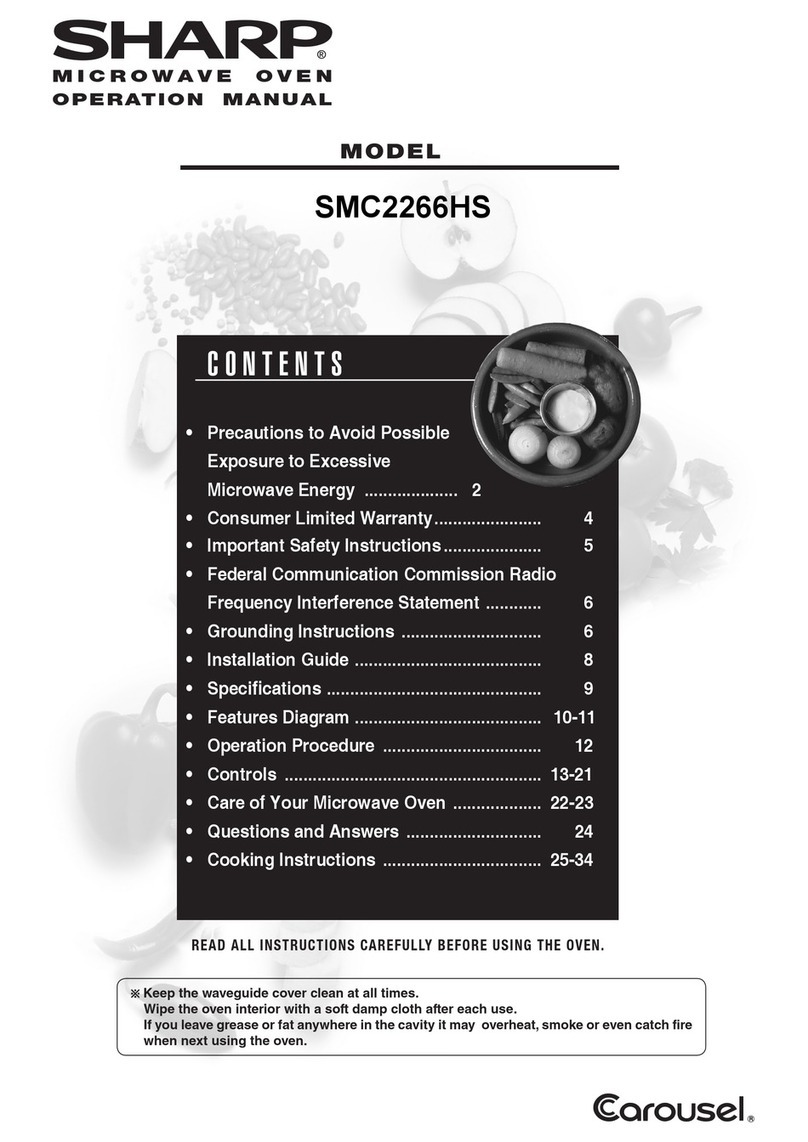
Sharp
Sharp ZSMC2266HS User manual
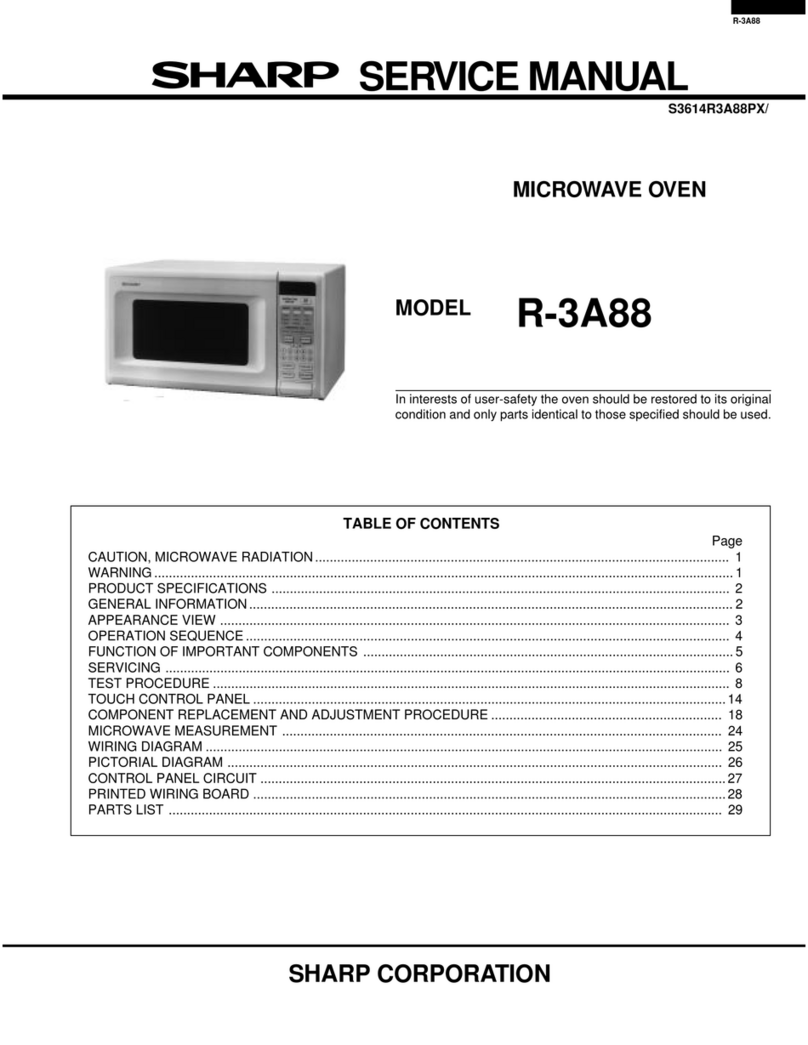
Sharp
Sharp R-3A88 User manual
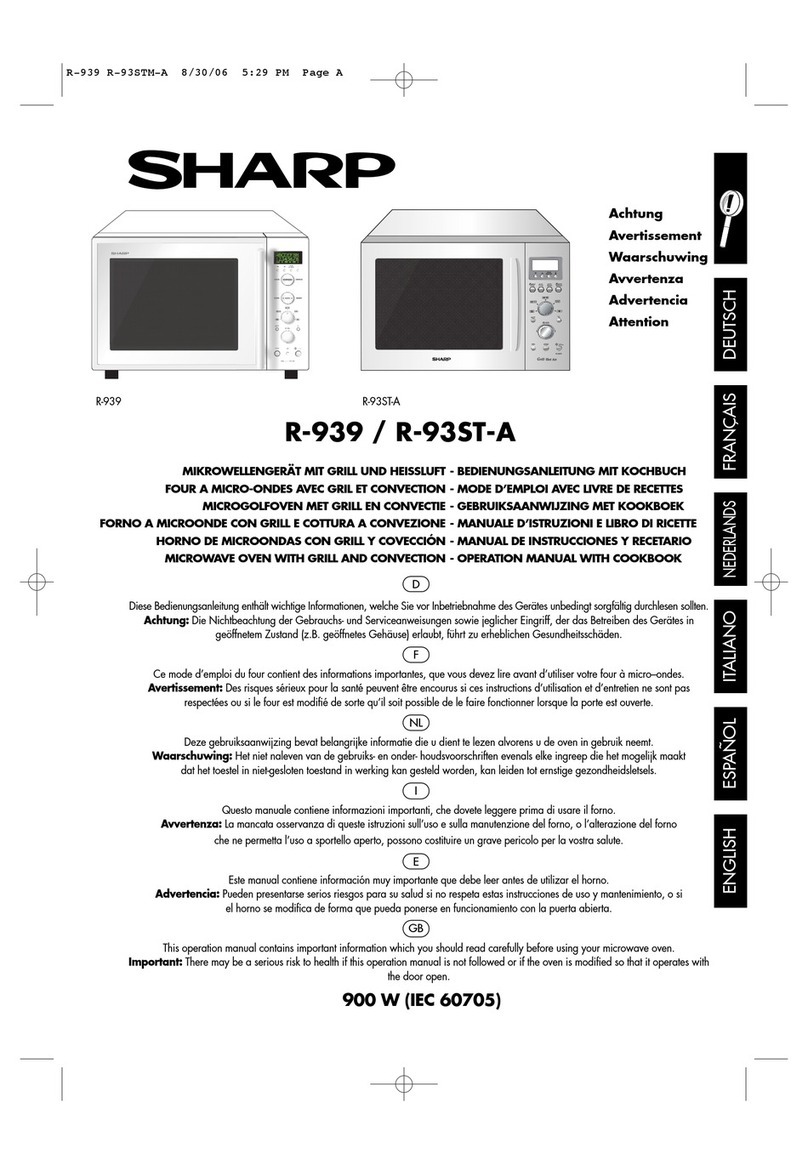
Sharp
Sharp R-93ST-A Instruction Manual
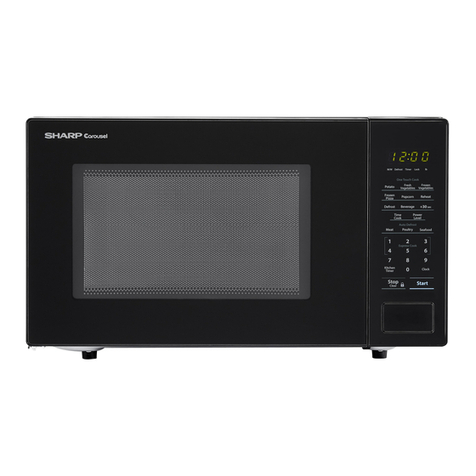
Sharp
Sharp Carousel SMC1131C User manual
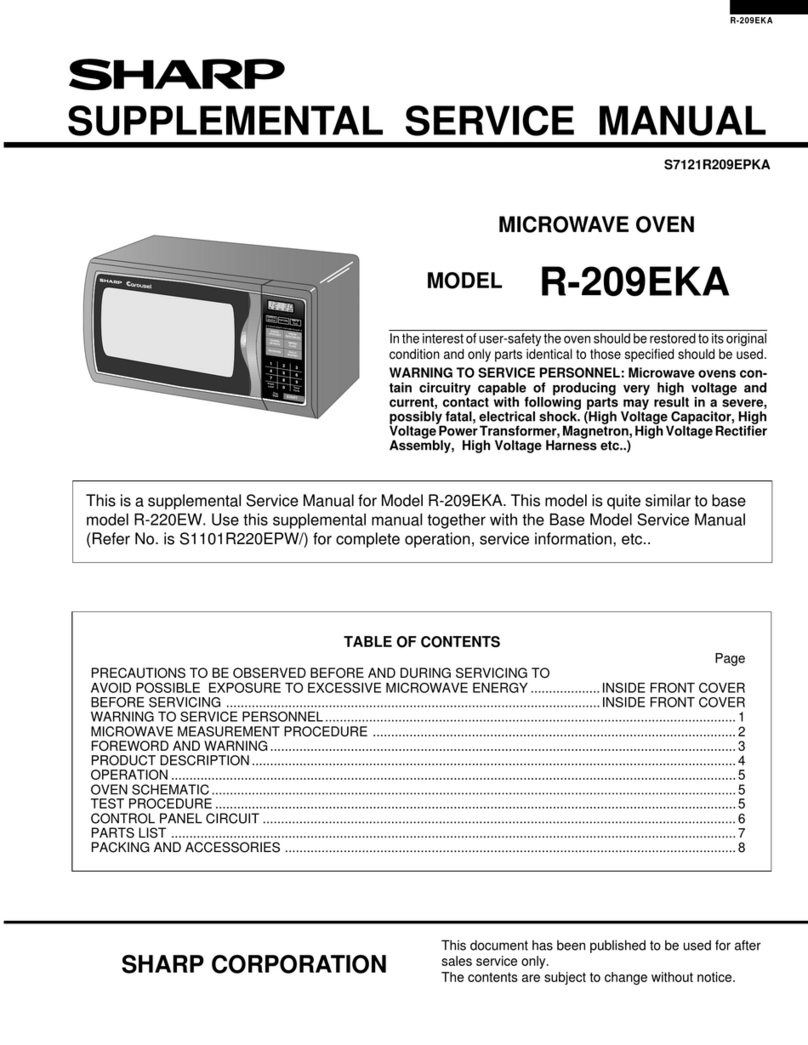
Sharp
Sharp R-209EKA User manual
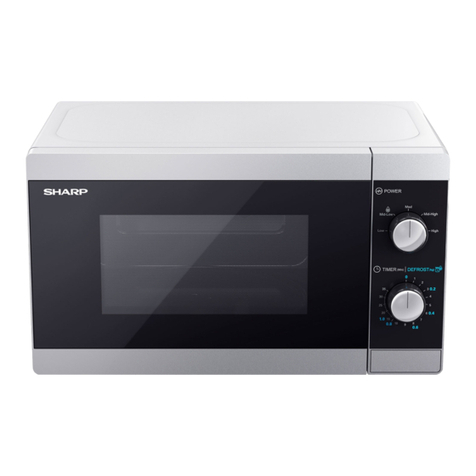
Sharp
Sharp YC-AS201 User manual
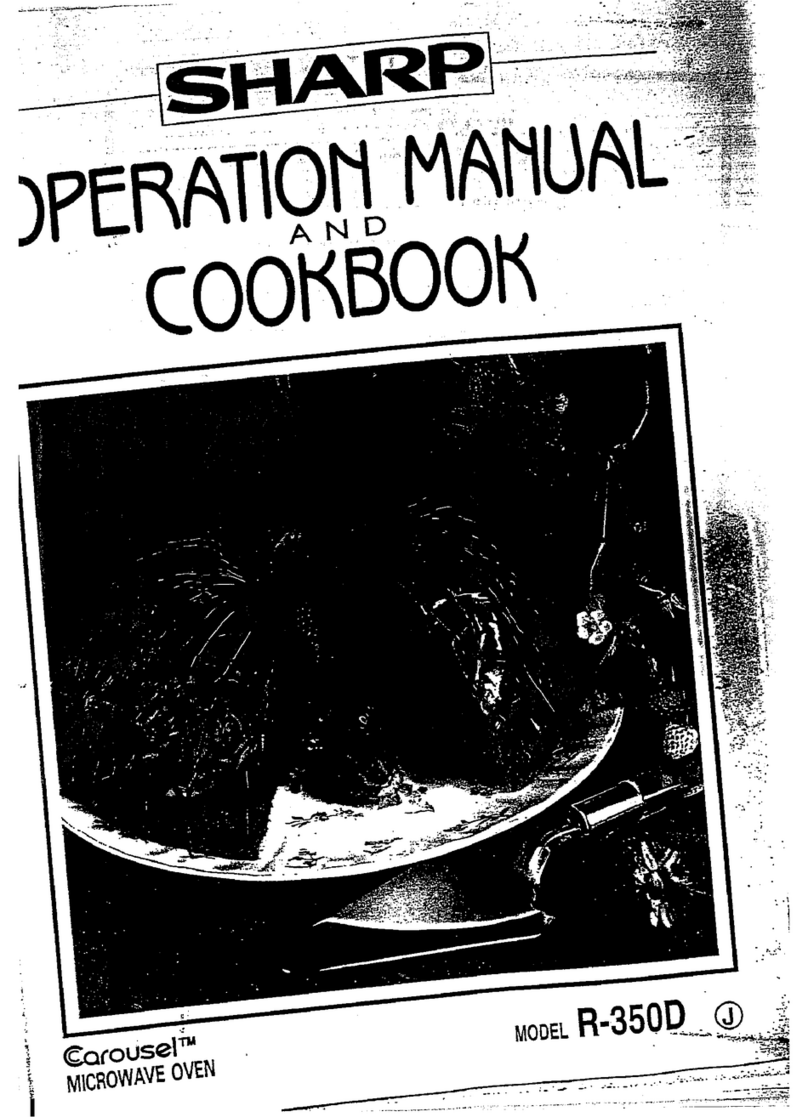
Sharp
Sharp R-350D User manual

Sharp
Sharp R-933FS User manual
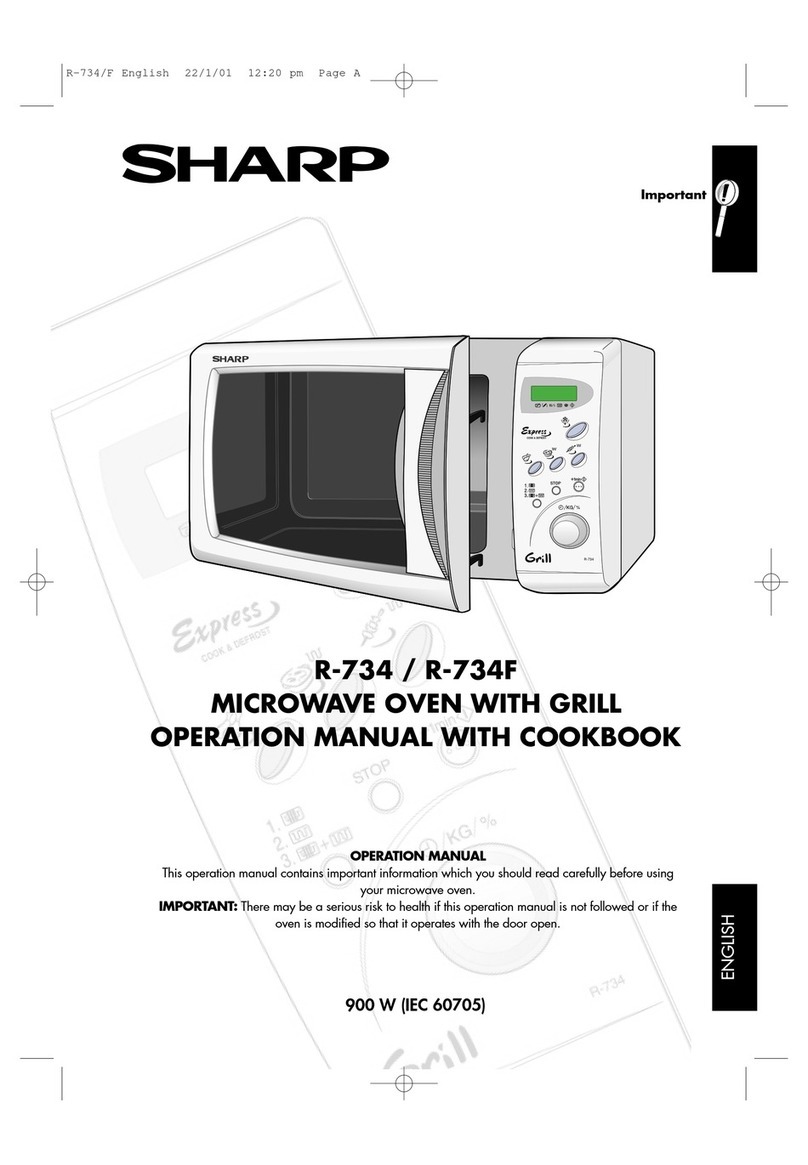
Sharp
Sharp R-734 Instruction Manual

Sharp
Sharp R-203EW User manual
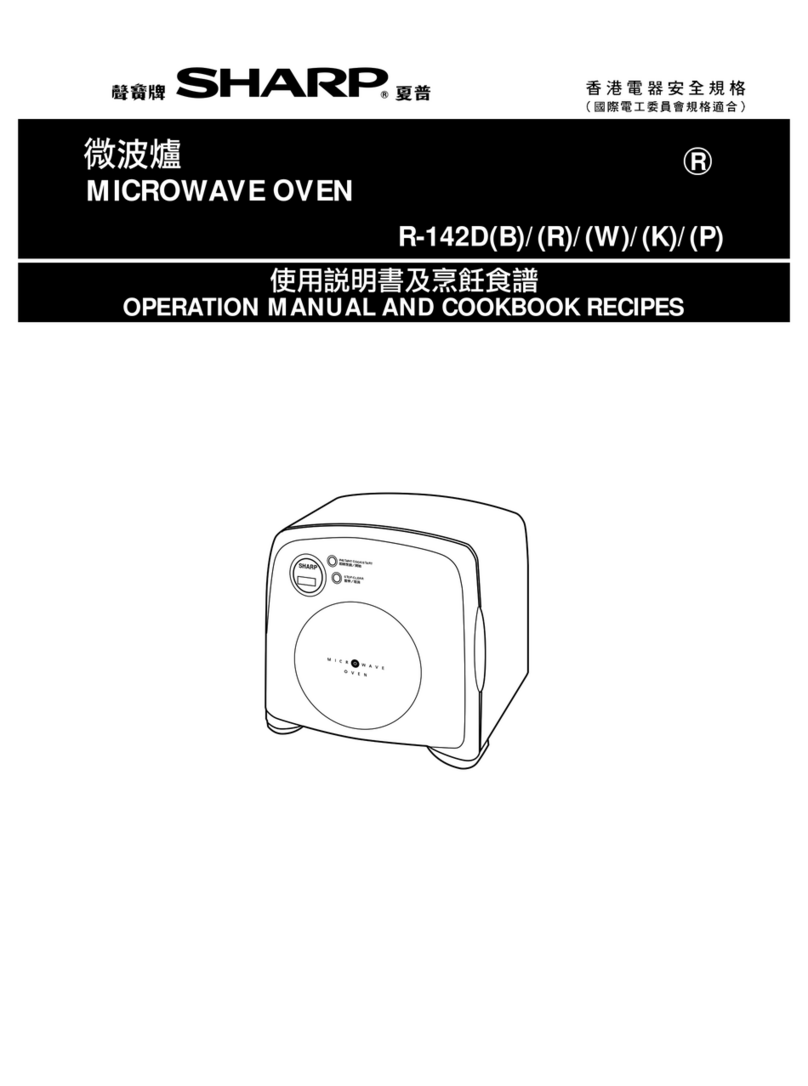
Sharp
Sharp R-142DB User manual
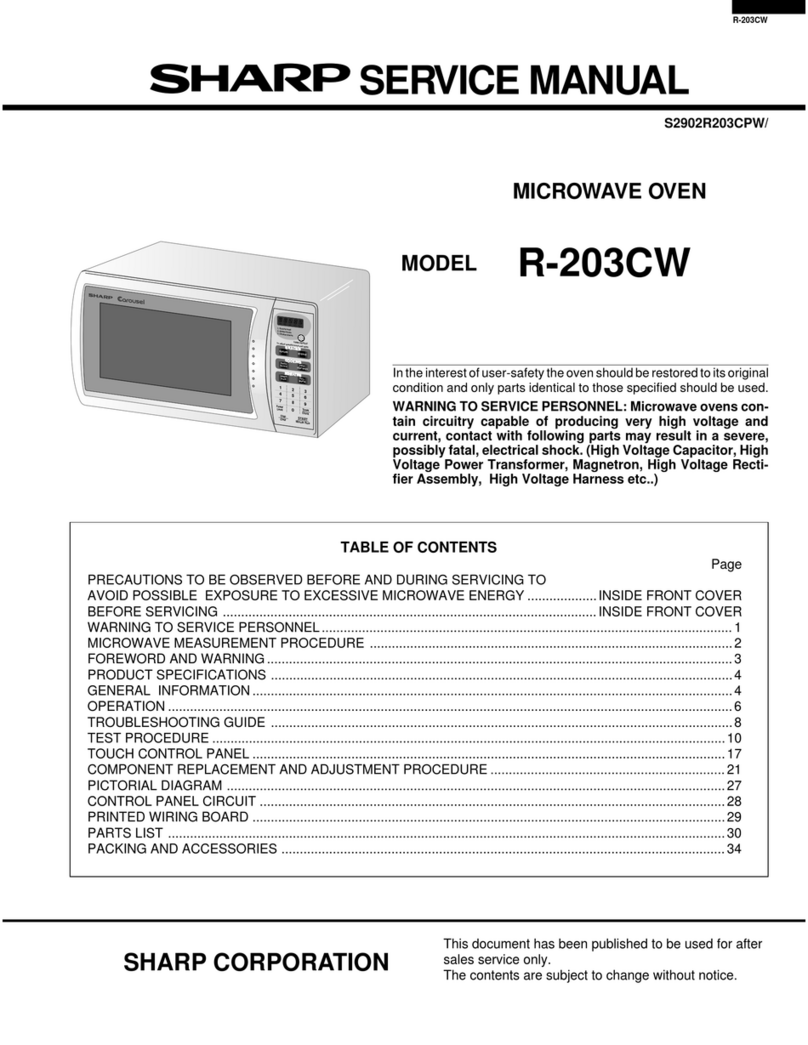
Sharp
Sharp R-203CW User manual
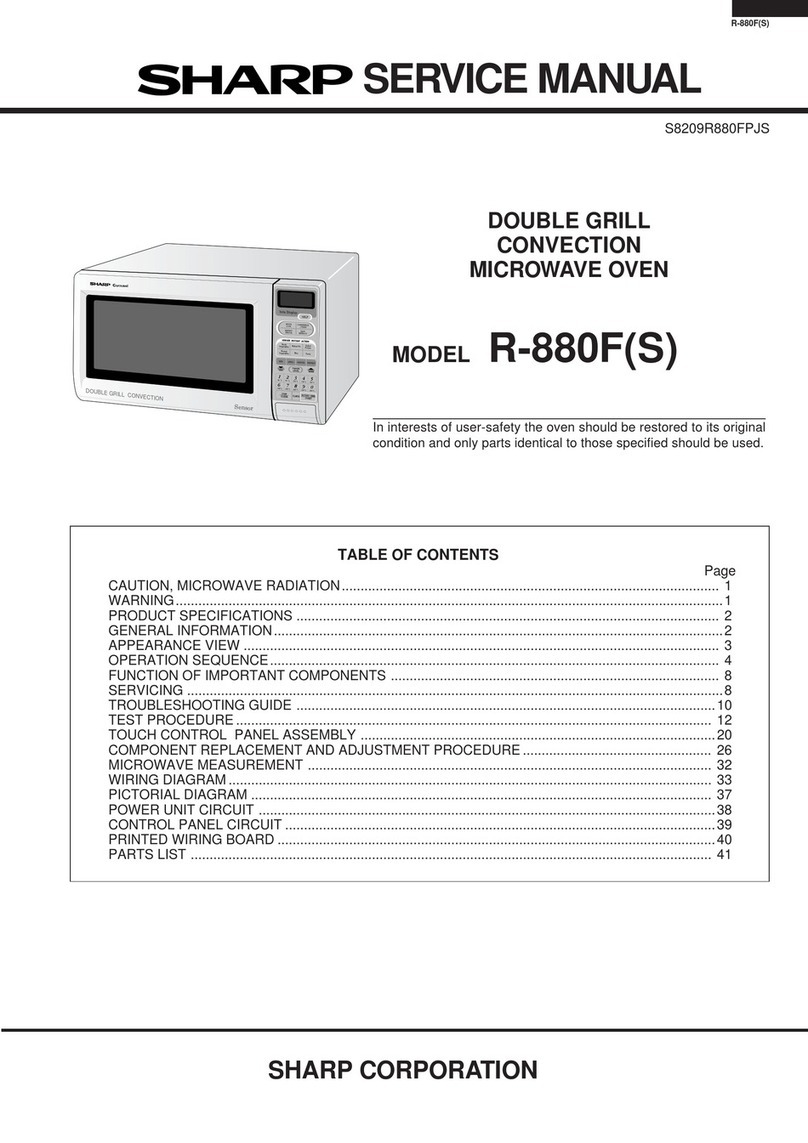
Sharp
Sharp Carousel R-880F User manual

Sharp
Sharp R-798-A Instruction Manual
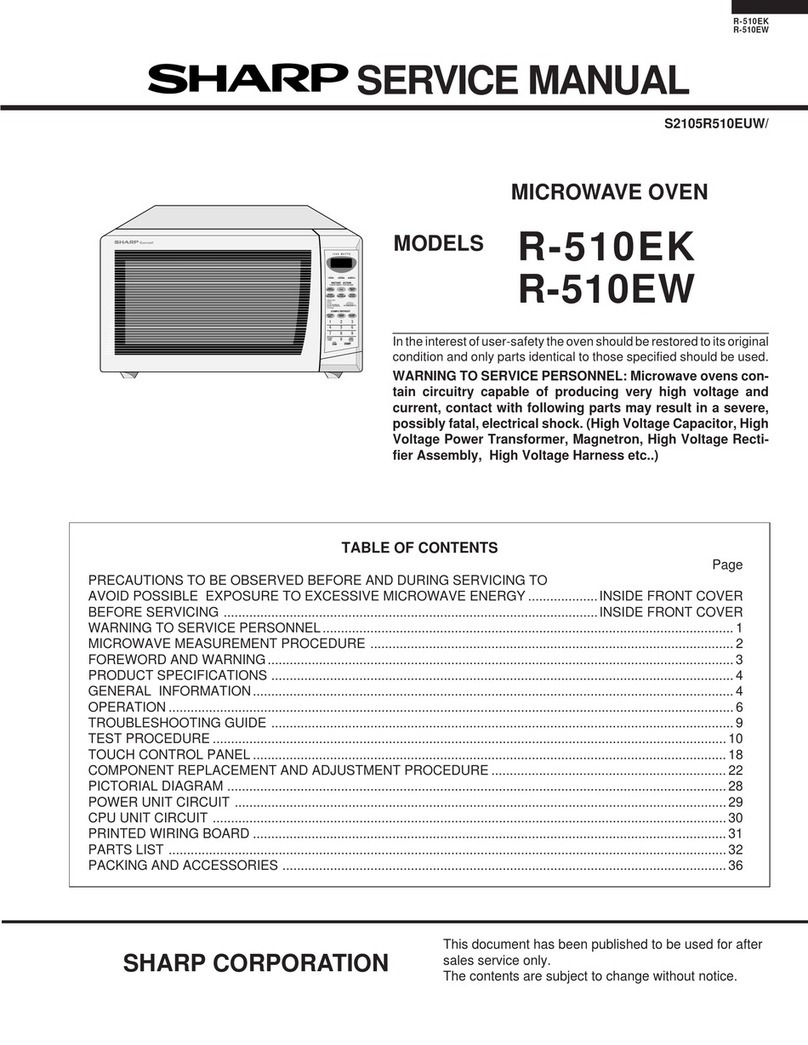
Sharp
Sharp R-510EK User manual
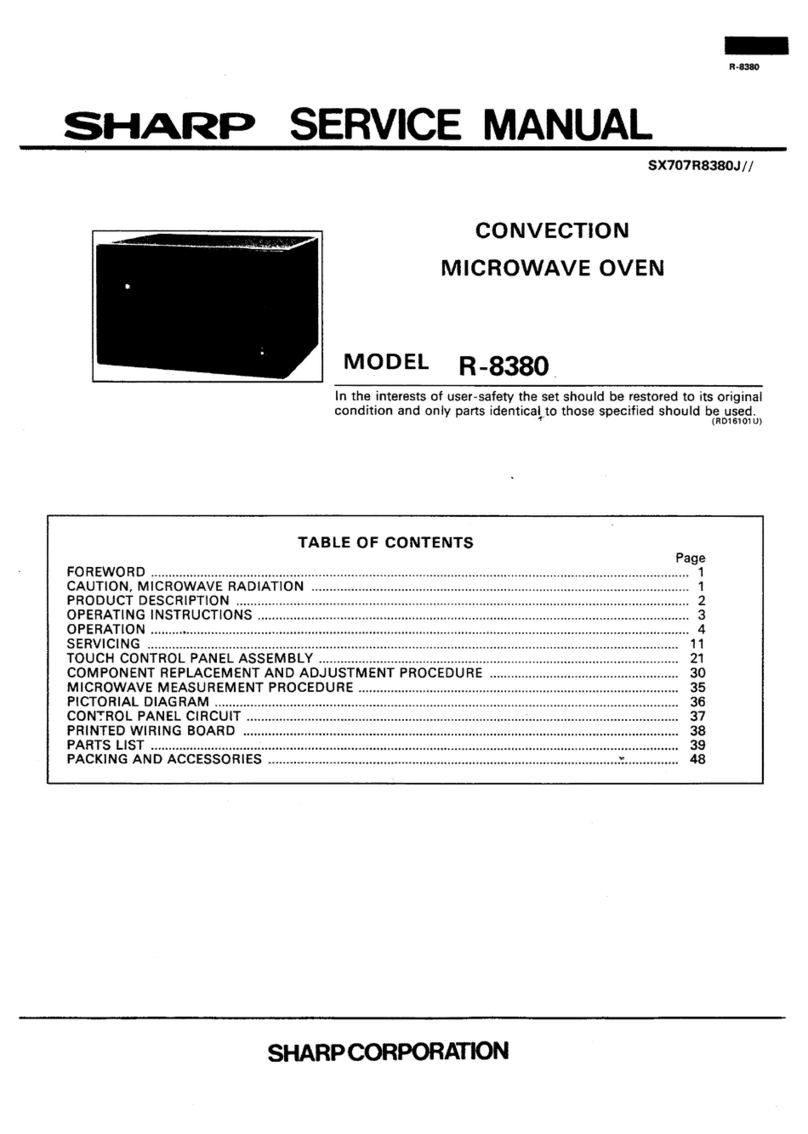
Sharp
Sharp R-8380 User manual
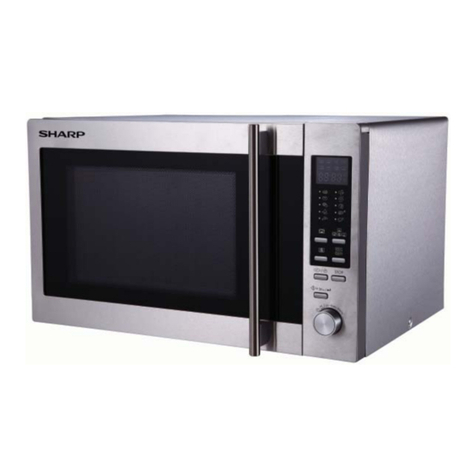
Sharp
Sharp R-92ST User manual

Sharp
Sharp R-330DK User manual
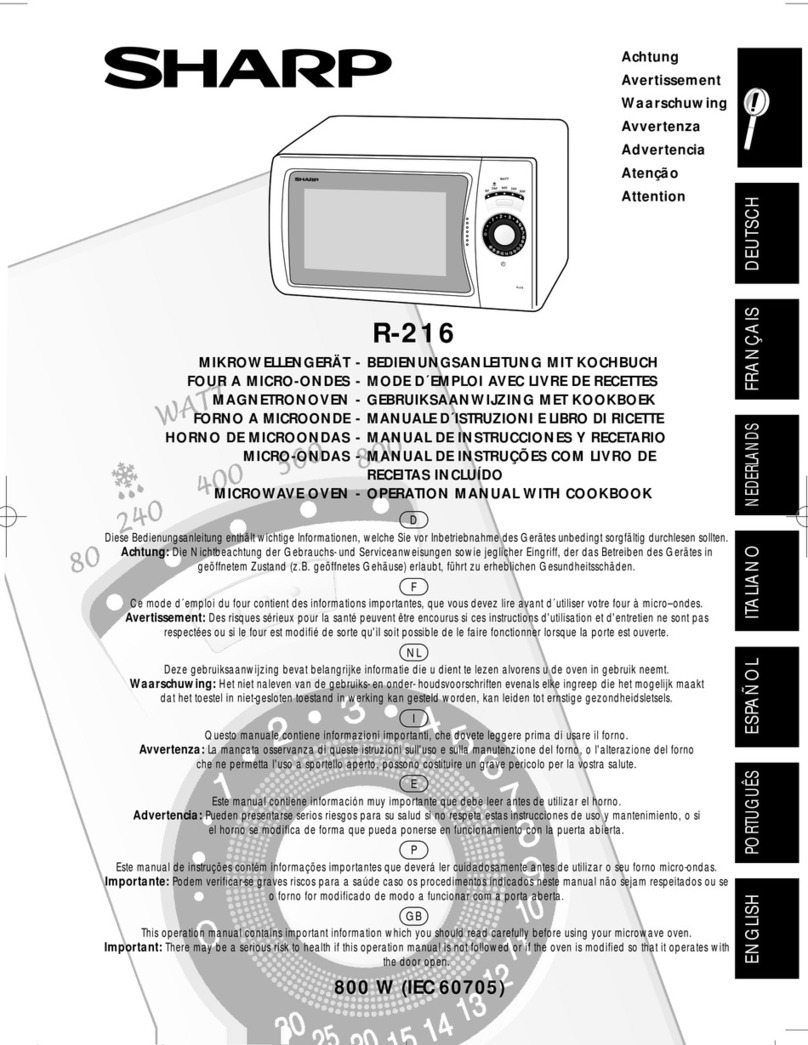
Sharp
Sharp R-216 Instruction Manual
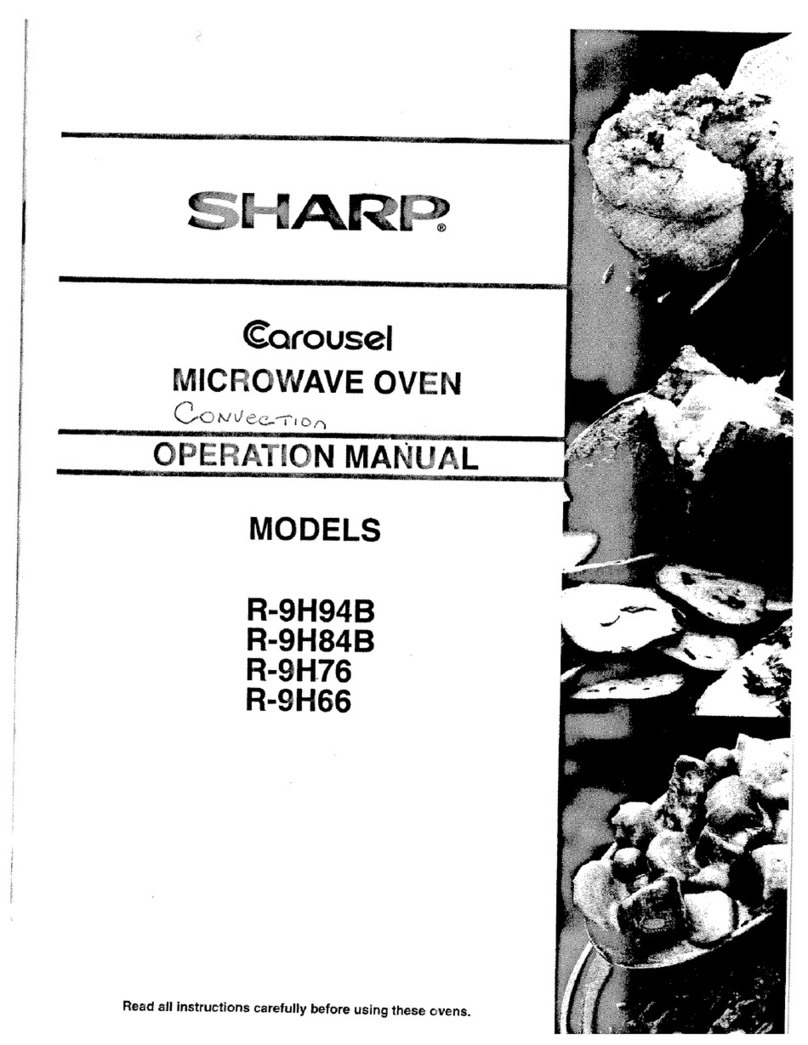
Sharp
Sharp Carousel R-9H94B User manual
Popular Microwave Oven manuals by other brands

GE
GE Spacemaker JVM1440BH datasheet

DAEWOO ELECTRONICS
DAEWOO ELECTRONICS KOR-6L8K5S83 Operating instructions & cook book

DAEWOO ELECTRONICS
DAEWOO ELECTRONICS KOR-1N5A9S Operating instructions & cook book

Daewoo
Daewoo KQG-6617G Operating instructions & cook book

Samsung
Samsung M1779 Owner's instructions

GE
GE JES1143 Use and care & cooking guide

Miele
Miele H6200BM(TB) Operating and installation instructions

Jocel
Jocel JMO011480 instruction manual

Electrolux
Electrolux EVL8E00X user manual

STOVES
STOVES Q900GRF DO User, installation & servicing instructions

Daewoo
Daewoo KOR-6L0B3S Operating instructions & cook book

KitchenAid
KitchenAid KCMS1555 Use and care guide
